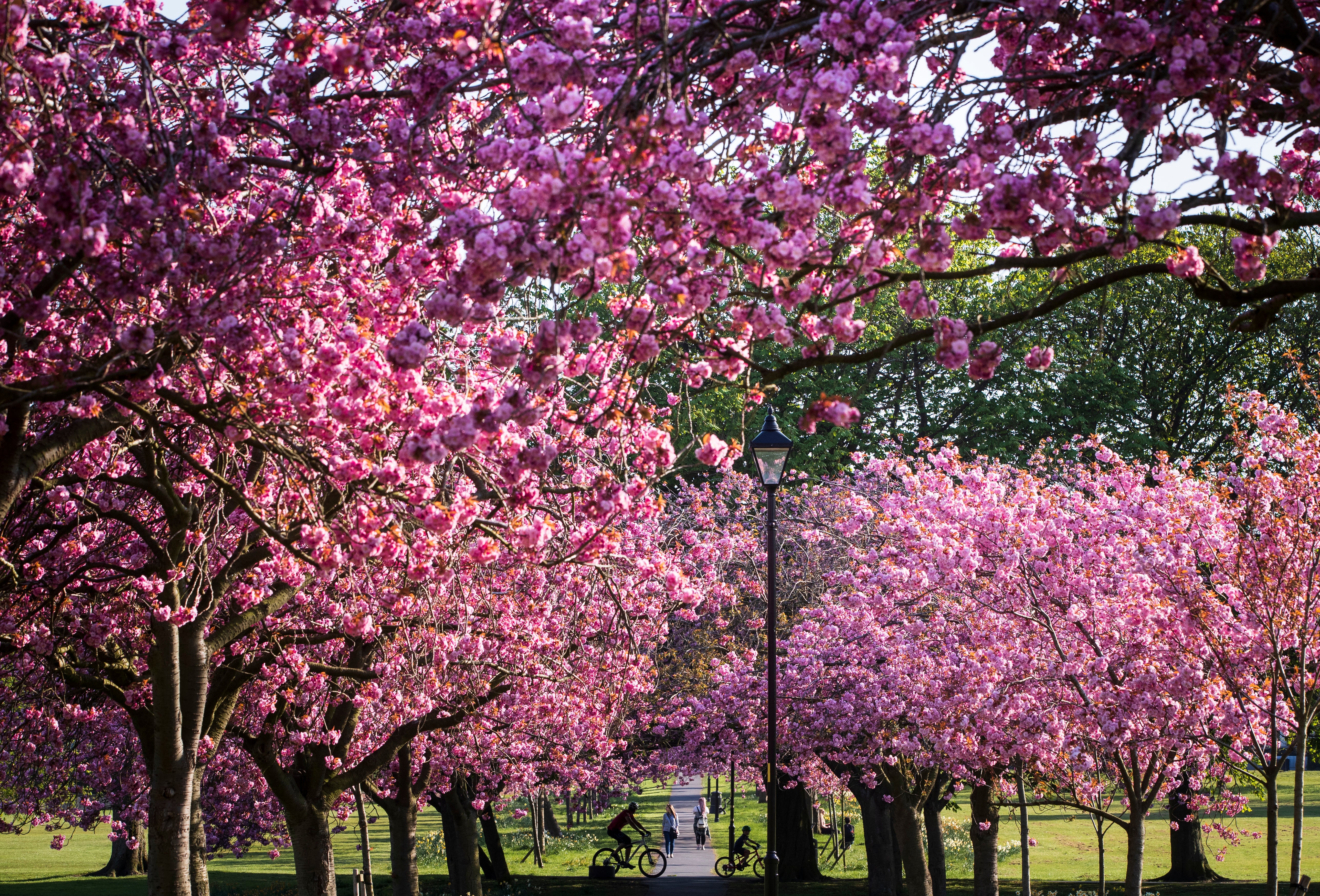Celebrate cherry blossom season by planting a cherry tree of your own
You don’t have to go all the way to Japan to enjoy glorious cherry blossoms. Here’s how to grow a cherry tree at home.

Your support helps us to tell the story
From reproductive rights to climate change to Big Tech, The Independent is on the ground when the story is developing. Whether it's investigating the financials of Elon Musk's pro-Trump PAC or producing our latest documentary, 'The A Word', which shines a light on the American women fighting for reproductive rights, we know how important it is to parse out the facts from the messaging.
At such a critical moment in US history, we need reporters on the ground. Your donation allows us to keep sending journalists to speak to both sides of the story.
The Independent is trusted by Americans across the entire political spectrum. And unlike many other quality news outlets, we choose not to lock Americans out of our reporting and analysis with paywalls. We believe quality journalism should be available to everyone, paid for by those who can afford it.
Your support makes all the difference.Nothing says spring quite like the white and pink of cherry blossom against a bright blue sky.
Revered in Japan where the prolific Japanese cherry (sakura) are a huge hanami (‘flower viewing’) attraction and meteorologists forecast when the hotly anticipated blooms will begin, the cherry blossom season in the UK and Ireland typically starts towards the end of March, with great clouds of colour appearing.
As part of the nationwide Sakura Cherry Tree Project (japanuksakura.org) symbolising UK-Japan friendship and cooperation, RHS gardens are among 160 sites planting flowering cherry trees.
The trees, donated by the Japanese private sector, are of three varieties chosen for colour variance, blossom timing and historical significance: the pink blossomed ’Beni-yutaka’; the great white cherry ‘Tai-haku’, once re-introduced to Japan from the UK after becoming extinct; and the pale pink-flowered Yoshino cherry ‘Somei-yoshino’.
For gardeners wanting to bring cherry blossom into their own gardens, there’s an ornamental cherry tree for every taste and garden size, whether you want a large spreading tree, a narrow upright, or dwarf weeping form. The flowers range from white to pink with single or double rounds of petals.
Emma Allen, garden manager at RHS Garden Wisley Surrey, shares some tips on how to grow these beautiful trees and choose a suitable cultivar.
Where to put a cherry tree
Despite their delicate looking blooms, these tough trees can tolerate a variety of soil types, especially chalky (alkaline) soils, although do best in full sun and sheltered from strong winds to protect the blossom.
They prefer a moist well-drained soil, so although they don’t want to sit too wet, they don’t like to dry out in summer, especially in the first few years when they are establishing their root system.
When to plant
Trees are usually planted bare-root between November and March, but you can plant container grown trees any time of year. Summer is best avoided as you will need to ensure they are adequately watered in dry, warm weather.
How to plant
Dig a hole larger than the root system of the tree and add a layer of organic matter such as manure or compost to the base of the hole. Ensure the tree is planted at the same level it was originally growing, ie, the top of the root system where it joins the stem is level with the soil surface. Then back fill the hole with the removed soil and mix with more organic matter.
If the tree is larger than an unbranched whip (a small, unbranched tree), support it with a strong stake and tree ties. If planting in a lawn, you could remove a circular piece of lawn around the tree so you don’t need to mow too close. You can mulch this with compost or wood chippings.
Size and shapes to consider
Some ornamental cherries eventually form a medium to large spreading tree. One of the best is Prunus x juddii which can reach more than 12m in height and 8m broad in time and has single pale pink flowers, or Prunus ‘Ichiyo’ which can reach 8m and has double shell pink flowers borne in pendulous clusters.
Others have an upright columnar form, such as Prunus ‘Amanogawa’ which would suit a smaller garden. Although it can reach 4-8m height, it won’t get broader than 3m, and carries delicately fragrant semi-double pale pink flowers.
My favourites are the weeping forms which work well on a slope or rock garden – or anywhere really. Prunus pendula ‘Pendula Rosea’ is a small tree (up to 4m) with graceful arching pendulous branches and single pale pink flowers.
I also recommend the excellent dwarf form of Prunus incisa ‘Kojo-no-mai’ AGM which has unusual zig-zag branches, and works well in a container.
Early and late blossom types
Some of the earliest blossom actually starts in late autumn or early winter, with the pale pink semi-double flowers of Prunus x subhirtella ‘Autumnalis Rosea’.
However, we usually think of cherry blossom appearing between March and April. Earlier flowering cultivars (mid-late March) include the stunning Prunus ‘Accolade’ which has dark pink buds opening to profuse semi-double pink flowers; Prunus ‘The Bride’ which is a small rounded tree with large petalled pure white single flowers; and the pale pink/white flowering Prunus x yedoensis.
You can extend the cherry blossom season with late bloomers (mid-late April), including the stunning Prunus ‘Shogetsu’ which is smothered in showy double pure white flowers, or the pale pink blossom of Prunus ‘Shizuka’.
More cherry benefits
They don’t just have gorgeous spring blossom, most cherries have fantastic autumn colour. Prunus ‘Ichiyo’ turns orange/red, while others have beautiful peeling bark, such as Prunus serrula or purple leaves – Prunus ‘Royal Burgundy’.
For more information on the ornamental cherry trees on display at RHS gardens, visit rhs.org.uk/gardens.